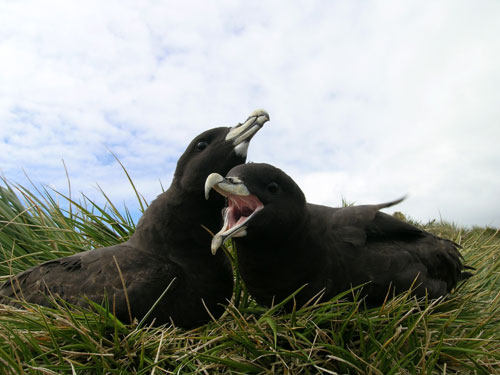Davi Castro Tavares (Laboratório de Ciências Ambientais, Universidade Estadual do Norte Fluminense, Campos dos Goytacazes, Brazil) and colleagues have published in the journal Marine Pollution Bulletin on the incidence of plastic items in the digestive tracts of 22 seabird species, including ACAP-listed albatrosses and petrels, washed up on the Brazilian coastline. Highest incidences of ingested plastic werer found in Black-browed Albatrosses Thalassarche melanophris, White-chinned Petrels Procellaria aequinoctialis and Great Shearwaters Ardenna gravis.
“Marine debris such as plastic fragments and fishing gears are accumulating in the ocean at alarming rates. This study assesses the incidence of debris in the gastrointestinal tracts of seabirds feeding at different depths and found stranded along the Brazilian coast in the period 2010–2013. More than half (55%) of the species analysed, corresponding to 16% of the total number of individuals, presented plastic particles in their gastrointestinal tracts. The incidence of debris was higher in birds feeding predominantly at intermediate (3–6 m) and deep (20–100 m) waters than those feeding at surface (< 2 m). These results suggest that studying the presence of debris in organisms mainly feeding at the ocean surface provides a limited view about the risks that this form of pollution has on marine life and highlight the ubiquitous and three-dimensional distribution of plastic in the oceans.”

White-chinned Petrels, photograph by Ben Phalan
With thanks to Davi Castro Tavares.
Reference:
Tavares, D.C., J.F. de Moura, A. & Merico, S. 2017. Incidence of marine debris in seabirds feeding at different water depths. Marine Pollution Bulletin. doi.org/10.1016/j.marpolbul.2017.04.012.
John Cooper, ACAP Information Officer, 10 May 2017

 English
English  Français
Français  Español
Español